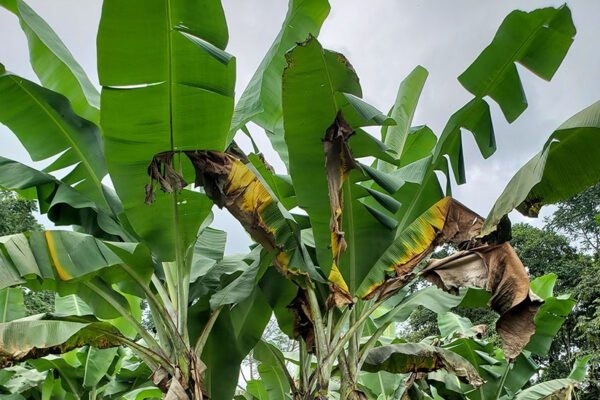A team of researchers led by CABI has identified 9,071 pest species previously unreported in Uganda, which could pose risks to smallholder farmers' livelihoods and the country's food security. The study, published in Frontiers in Agronomy, used the CABI Horizon Scanning Tool to identify a subset of 1,517 pest species for rapid risk assessment, including Fusarium f.sp. cubense Tropical Race 4 on banana, tomato leafminer (Pthorimaea absoluta), papaya mealybug (Paracoccus marginatus), and fall armyworm (Spodoptera frugiperda).
The assessment considered the likelihood of entry and establishment, socio-economic and environmental impact, and possible introduction pathways. Of the 1,517 species, 360 were reported as invasive. These included 357 arthropods, 130 bacteria, 74 chromista, 417 fungi, 19 molluscs, 124 nematodes, nine protists, and 387 viruses and viroids.
 © CABI
© CABI
Recommended measures include targeted surveillance, regulation supported by pest risk analysis, contingency planning, publicity, industry management, and research.
Dr Joseph Mulema, lead author and Senior Scientist at CABI, said, "The horizon scanning study has identified high-risk invasive pests that could threaten Uganda's agriculture, biodiversity, forestry, and livelihoods. This information is vital for risk monitoring and management and can be utilised by countries in the East African Region."
Agriculture accounts for about 24% of Uganda's GDP, 35% of export earnings, and employs 68% of the labour force. Pests can affect staple and cash crops as well as sensitive ecosystems, alongside extreme weather events.
Dr Paul Mwambu, Commissioner of the Department of Crop Inspection and Certification (DCIC) and head of the National Plant Protection Organization, said, "Having now gained a comprehensive understanding of the potential impact that pest species may have on Uganda's agricultural industry and environment, we are positioned to significantly enhance our capacity to manage these pests sustainably across the entire food value chain, and promote safe trade." He noted that the Agricultural Sector Strategic Plan prioritises commodities such as banana, cassava, cocoa, coffee, beans, cotton, maize, palm oil, potatoes, rice, tea, oil seeds, fruit, vegetables, dairy, fish, and livestock.
Professor Herbert Talwana from Makerere University said three pest introduction pathways were assessed: containment, stowaway, and unaided. Containment was considered more plausible for seed-borne pests, while the stowaway pathway was deemed more likely for vector- and soil-borne pests from neighbouring countries.
Dr Idd Ramathani of the National Agricultural Research Organisation said the study supports prevention, contingency planning, and early detection. "Uganda can only achieve this by putting in place a robust risk monitoring, early detection, and rapid response system," he said, adding that a national pest risk register would be central to tracking threats.
Researchers also recommend that DCIC develop a risk communication strategy and code of conduct for stakeholders to minimise introductions of damaging pests. Mulema said the aim is to prevent the introduction, establishment, and spread of quarantine pests or generate research data to guide phytosanitary decisions.
 For more information:
For more information:
Wayne Coles
CABI
Tel: +44 (0)1491 829395
Email: [email protected]
www.cabi.org
